AI cryptocurrencies are reshaping industries by merging artificial intelligence with blockchain technology. These coins enhance efficiency, scalability, and functionality across sectors like healthcare, finance, supply chain, and digital media. Here’s a quick look at seven leading AI crypto projects and their standout features:
- Render (RNDR): Decentralized GPU sharing for AI tasks and 3D rendering. Market cap: $2.06B. Price: $3.98.
- Beldex (BDX): Privacy-focused with AI tools like BChat and BelNet. Total supply: 9.9B tokens.
- dKargo (DKA): AI-powered logistics automation. Market cap: $83.35M. Circulating supply: 4.69B tokens.
- Fetch.ai (FET): Autonomous AI agents for task automation using modular systems.
- SingularityNET (AGIX): Decentralized AGI development with OpenCog Hyperon. $53M allocated for AGI projects.
- Bittensor (TAO): Decentralized AI collaboration with capped supply of 21M tokens. Current price: $745.
- Ocean Protocol (OCEAN): Data monetization platform. Current price: $1.05.
Quick Comparison Table
| Cryptocurrency | Key Technology | Current Price | Market Cap | Standout Feature |
|---|---|---|---|---|
| Render (RNDR) | Decentralized GPU Network | $3.98 | $2.06B | GPU-as-a-service platform |
| Beldex (BDX) | Privacy-focused AI | N/A | N/A | Privacy tools: BChat, BelNet |
| dKargo (DKA) | Smart Contract Logistics | N/A | $83.35M | Supply chain automation |
| Fetch.ai (FET) | Modular Agent Systems | N/A | N/A | Multi-agent automation |
| SingularityNET | OpenCog Hyperon for AGI | N/A | N/A | Decentralized AGI development |
| Bittensor (TAO) | Decentralized AI Collaboration | $745 | N/A | Subnet mining system |
| Ocean Protocol | Data Monetization | $1.05 | N/A | Data marketplace |
These projects are driving innovation in AI and blockchain, offering unique solutions for complex problems. Whether you're an investor or a tech enthusiast, understanding these platforms can help you navigate this evolving landscape.
Top 20 AI Cryptos Ranked By Growth Potential
1. Render (RNDR)
Render demonstrates how AI-focused crypto coins enable decentralized GPU sharing to speed up AI workloads.
The Render Network links GPU owners with creators, offering a more efficient way to handle AI training and 3D rendering using blockchain technology. In 2024, the network processed 40 million frames - four times more than in 2023 - and token usage surged to 1.1 million in Q4 2023.
Market Snapshot: RNDR has a market cap of $2.06 billion, with 517,716,590 tokens in circulation. The token is priced at around $3.98, with daily trading volumes hitting $72.8 million.
Render simplifies GPU rendering, cutting both costs and time for creators.
Real-World Use Cases: RNDR was used by artists for a Coca‑Cola ad at the Las Vegas Sphere in November 2023 and a Star Trek spatial demo showcased on the Apple Vision Pro in February 2024.
Analysts predict RNDR will trade between $8.11 and $18.53 in 2025, with an average price of about $13.
RNDR is tapping into the $3.4 billion GPU-as-a-service market, which is growing at an annual rate of 21.6%. Its proof-of-render system ensures work is validated before payment, with a 0.5–5% fee supporting the network.
The token's incentives and peer-to-peer GPU-sharing model highlight how AI and crypto are reshaping the economics of computing through decentralized networks.
2. Beldex (BDX)
Beldex combines privacy features with AI-driven improvements using federated learning. This approach protects user data while enhancing transaction performance.
Core Technology
Beldex employs RingCT and stealth addresses to keep transactions private. Here are the key specifications:
| Feature | Specification |
|---|---|
| Block Time | 30 seconds |
| Block Reward | 6.5 BDX |
| Masternode Stake | 10,000 BDX |
| Total Supply | 9.9 billion |
| Active Masternodes | 1,883 |
In December 2021, Beldex transitioned from Proof-of-Work to Proof-of-Stake, increasing its scalability and reducing energy consumption.
Privacy Suite
Beldex provides several privacy-focused tools:
- BChat: A private messaging app enhanced with AI
- BelNet: A decentralized VPN
- Beldex Browser: A web browser designed for privacy
Market and AI Integration
The platform's low staking rate has raised concerns about security and potential collusion. To address this, Beldex employs a coin-burn mechanism to limit supply and encourage masternode participation. Its BeldexAI uses Private Set Intersection (PSI) and federated learning to improve transaction handling and detect fraud, all while maintaining user privacy.
Next, we’ll explore dKargo’s AI-powered logistics token.
3. dKargo (DKA)
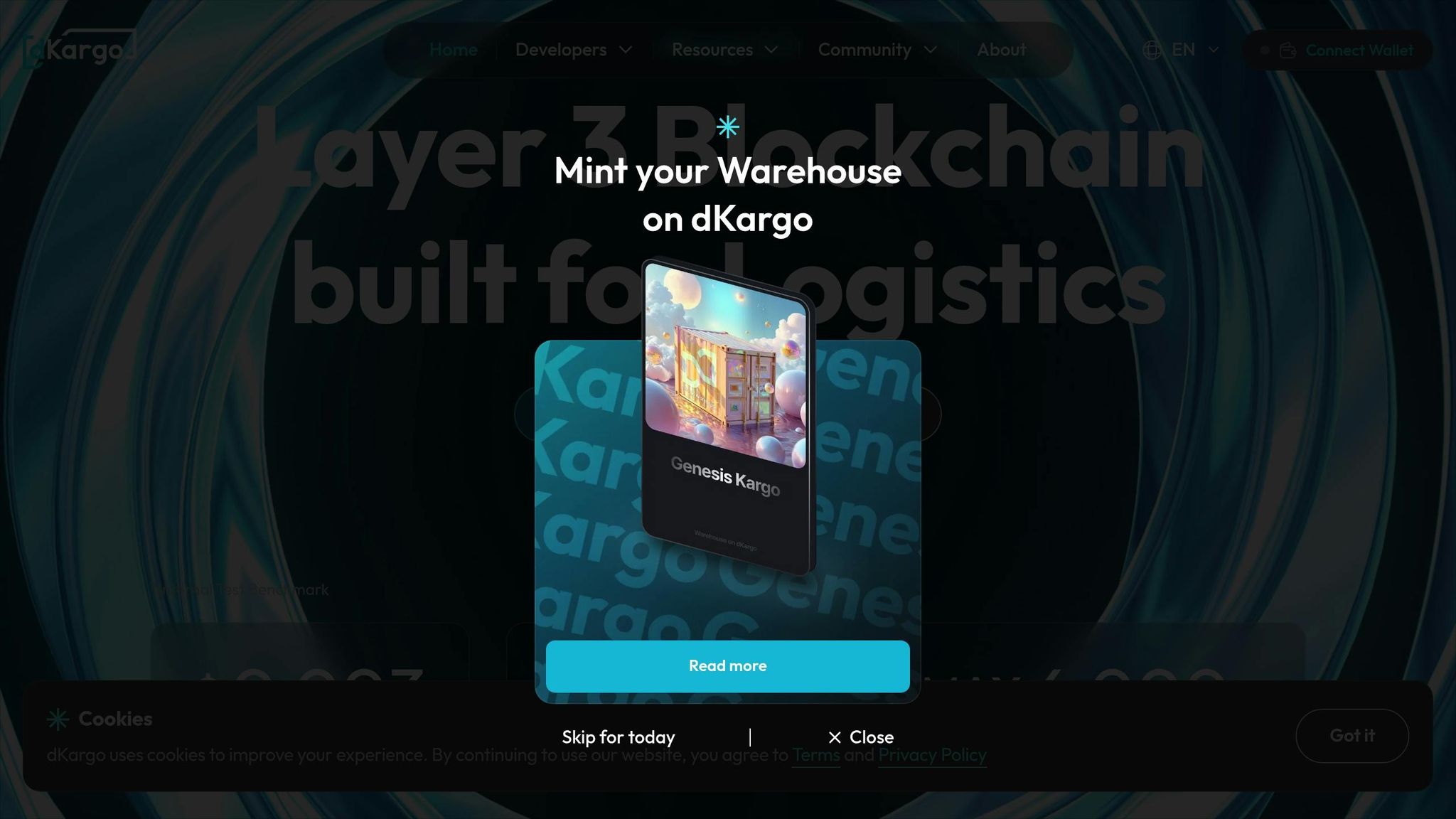
dKargo leverages AI-powered smart contracts on a blockchain network to streamline and automate logistics processes.
Market Performance
As of April 2025, dKargo holds a market cap of $83,352,449, with around 4.69 billion DKA in circulation out of a total supply of 5 billion. Over the past week, its value increased by 10.9%, with a 3.2% rise in the last 24 hours. While the trend remains positive, technical indicators hint at a possible short-term pullback.
Technology and Implementation
The platform simplifies logistics by automating documentation and settlement processes, improving transparency and coordination between shippers, carriers, and brokers. Its growing adoption by enterprises highlights the rising trust in blockchain-enabled logistics solutions.
Next, let's explore Fetch.ai (FET), which focuses on using autonomous AI agents for decentralized task automation.
4. Fetch.ai (FET)
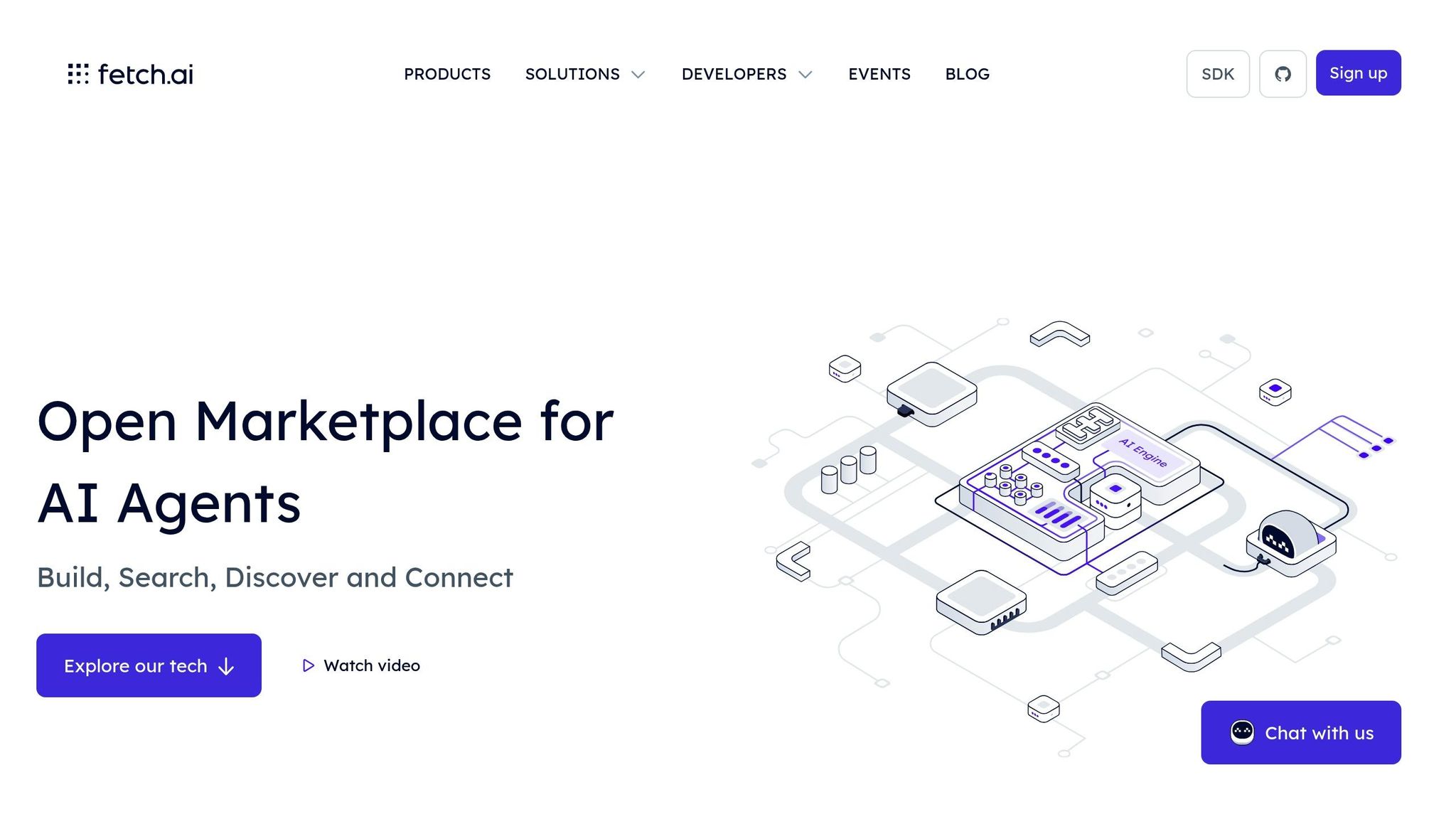
Fetch.ai focuses on automating tasks using modular agent systems through its uAgents library. This library brings together various components like large language models (LLMs), AI models, APIs, and frameworks such as Langchain, CrewAI, Autogen, and Vertex AI. Developers can combine these tools to create agents, deploy them on Agentverse (either in the cloud or offline), and let the AI Engine manage their interactions.
A semantic layer helps tag agent capabilities, making them easier to find within the Agent Marketplace. With built-in protocol adapters, compatibility with major AI frameworks, and both natural-language and graphical interfaces, Fetch.ai is designed to cater to both developers and non-technical users.
sbb-itb-212c9ea
5. SingularityNET (AGIX)
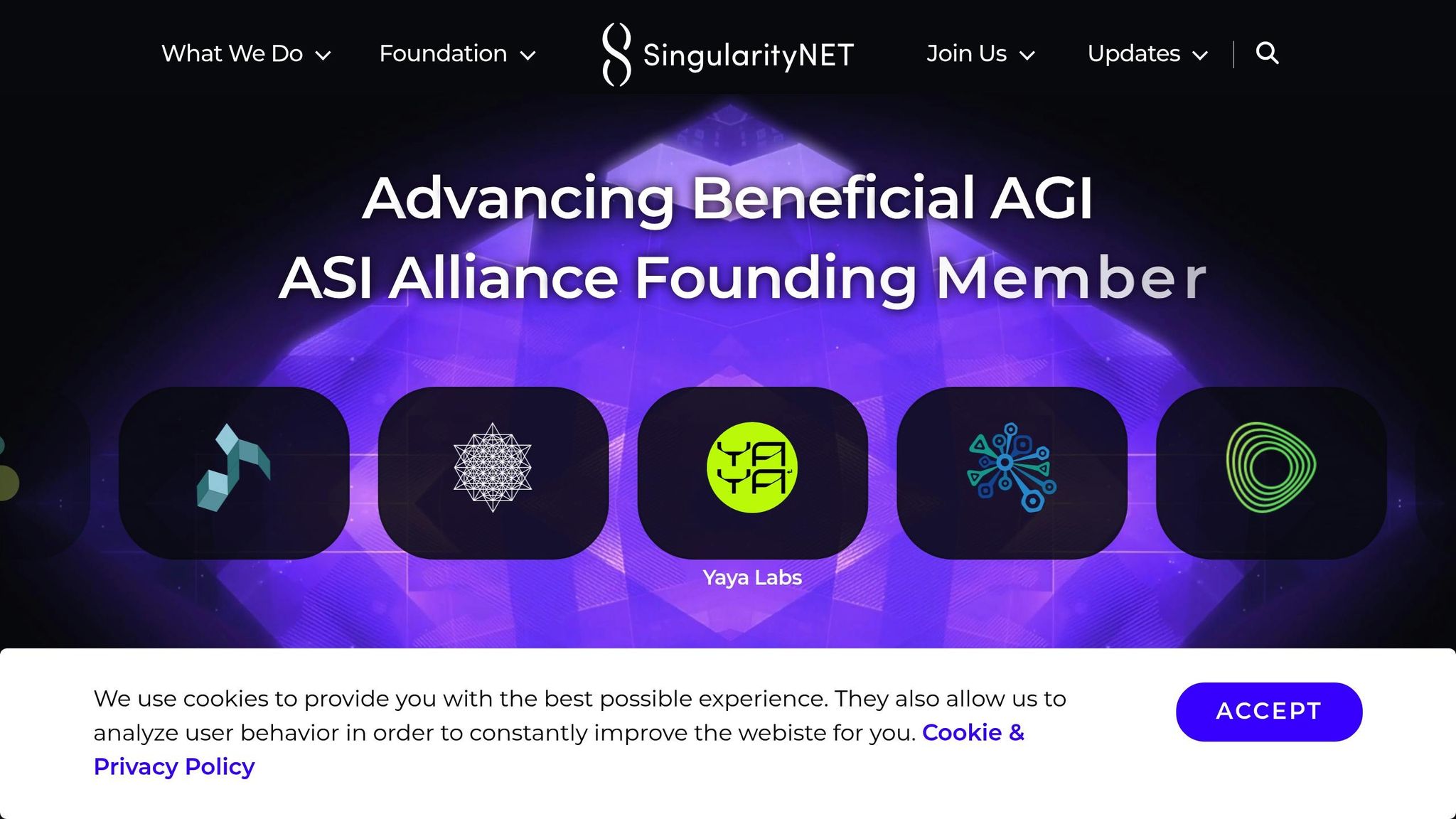
SingularityNET takes a unique approach in the AI crypto space, aiming to create decentralized and democratic artificial general intelligence (AGI). Unlike many major tech companies that rely heavily on large language models, SingularityNET uses a hybrid neural-symbolic framework called OpenCog Hyperon. This method supports a wide range of AI applications and highlights practical use cases.
The platform's tech stack includes a self-organizing network for agent collaboration, a structured knowledge layer for precise reasoning, and compatibility with various cognitive systems - from chatbots to theorem provers.
Performance benchmarks are impressive. Recent tests revealed a nearly 1,000,000× improvement in factorial calculations, logging speeds that are 1,000× faster, and a 10× decrease in memory usage.
In 2024, SingularityNET partnered with AL'MA Action Logement to develop an AI-powered BIM RAG system for managing 1.2 million housing units. Additionally, it launched a $1.25 million Deep Funding grant to support AGI research. These initiatives show how AI crypto projects can address large-scale challenges in real-world industries.
COO Janet Adams stresses the importance of keeping AGI decentralized and accessible to everyone.
The company has also allocated $53 million to build the first modular supercomputer designed for decentralized AGI development.
Next, we’ll dive into a comparison of these platforms based on market and technical metrics.
6. Bittensor (TAO)
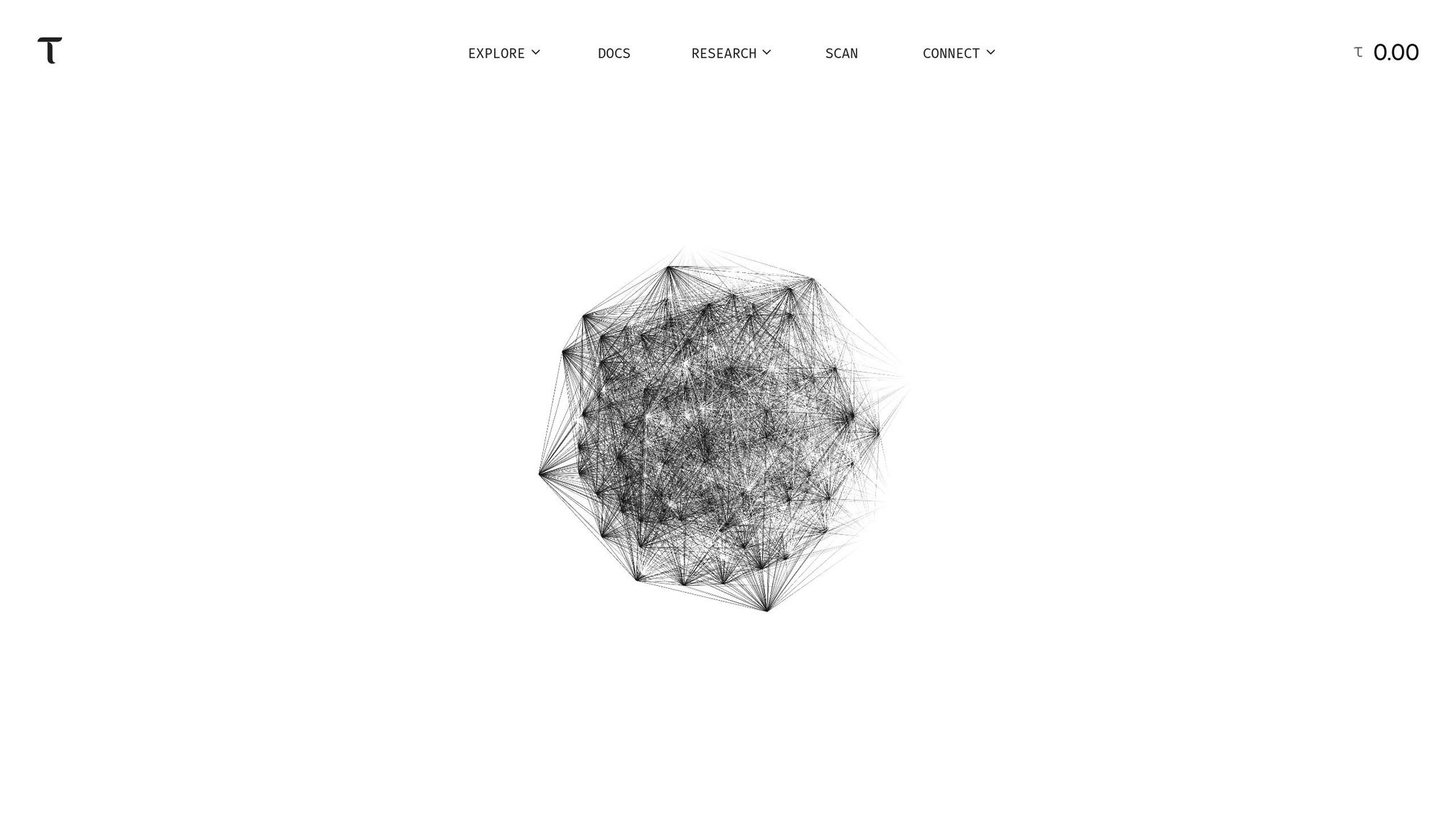
Bittensor showcases how token incentives can encourage decentralized AI collaboration by enabling secure and efficient interactions among AI models on a blockchain network. It uses TAO tokens to reward node operators, subnet miners, and validators for their contributions to the system's intelligence.
The TAO supply is capped at 21 million tokens, with 1 TAO issued every 12 seconds (7,200 per day) and a halving schedule every four years. To participate, nodes must register a key and stake TAO - either directly or through the Opentensor Foundation's pool - to mine or validate, earning rewards based on their performance.
Launched at around $80 in 2023, TAO reached a high of $783 before stabilizing at $745 by December. Projections suggest it could trade between $600 and $800 in 2025.
The Dynamic TAO (dTAO) upgrade introduces subnet tokens and liquidity pools, creating a system where rewards are distributed based on the performance of individual subnets. Nvidia and Google Cloud are testing integrations, and a potential Coinbase listing could improve TAO's liquidity.
Up next, Ocean Protocol explores how AI can help monetize and manage data assets.
7. Ocean Protocol
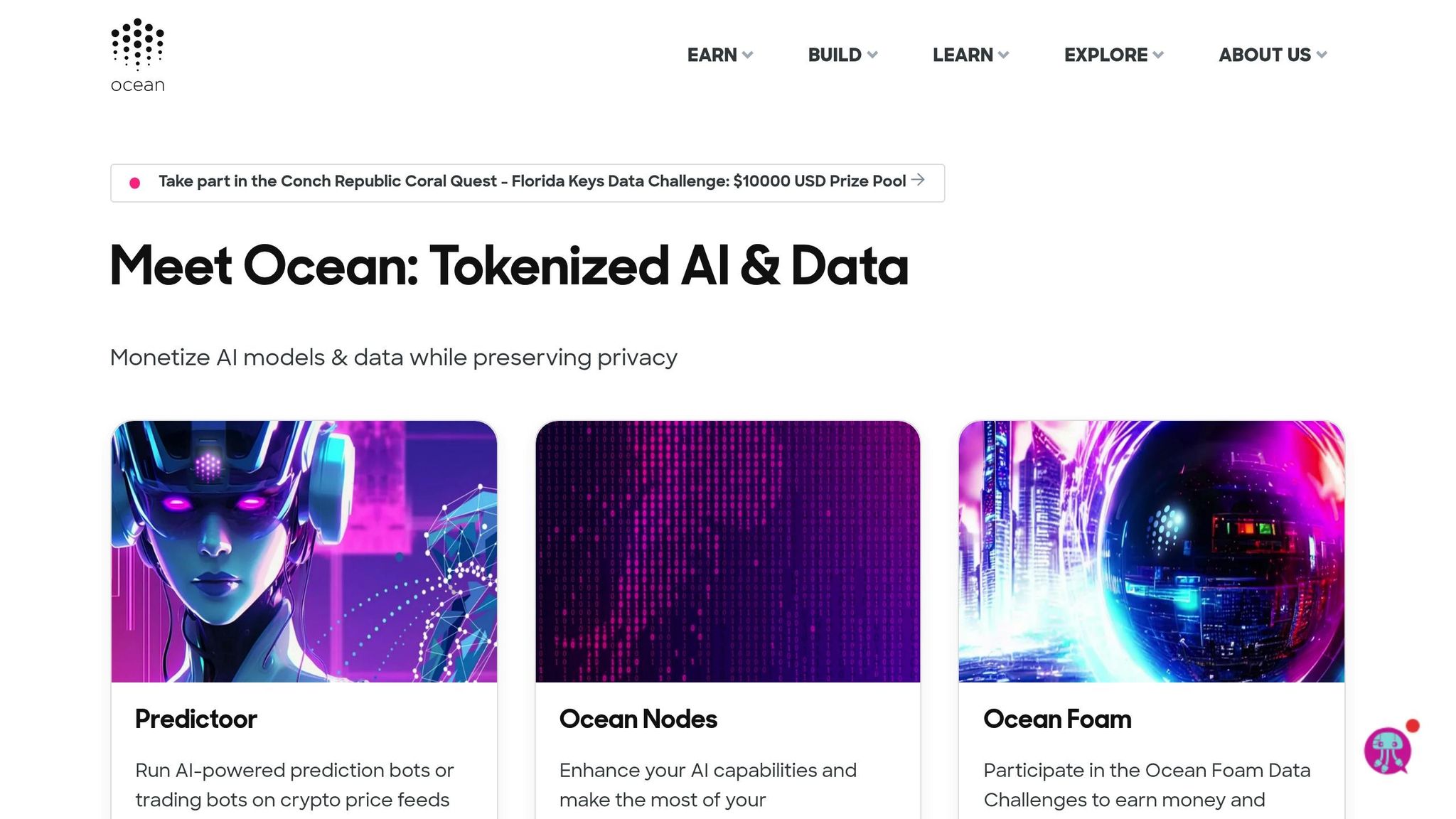
Ocean Protocol focuses on data monetization, setting it apart from platforms that prioritize compute or model incentives.
It offers a secure ecosystem designed to protect privacy while enabling data owners to tokenize and monetize their datasets. This setup attracts researchers and analysts looking for reliable AI training data. Ocean Protocol also provides API and SDK tools, making it easier to create custom data marketplaces. Additionally, OCEAN token holders can stake their tokens to earn rewards.
Currently, there are 568,381,103 OCEAN tokens in circulation, trading at $1.05 - a 23.9% increase over the past week. Projections suggest OCEAN's price could rise from $0.565 in September to $0.742 by December 2025, offering a potential return on investment of 91–173%.
Performance Comparison
Here's a breakdown of seven AI crypto coins, highlighting their technology, market performance, and standout features:
| Cryptocurrency | Key Technology | Market Performance (Jan 2025) | Standout Features |
|---|---|---|---|
| Render (RNDR) | Decentralized GPU Network | $3.98; $2.06B market cap | GPU-as-a-service platform |
| Beldex (BDX) | Privacy-focused AI | 1,883 active masternodes | RingCT, stealth addresses |
| dKargo (DKA) | Smart Contract Logistics | $83.3M market cap | Supply chain automation |
| Fetch.ai (FET) | Modular Agent Systems | uAgents library adoption | Multi-agent automation |
| SingularityNET (AGIX) | OpenCog Hyperon | $53M AGI investment | Neural-symbolic AI |
| Bittensor (TAO) | Decentralized AI Network | +4.61%; $745 price level | Subnet mining system |
| Ocean Protocol (OCEAN) | Data Monetization | $1.05; 568M circulation | Data marketplace |
This table provides a quick snapshot of each project's strengths and current market position.
Some key market trends include:
- Bittensor saw steady growth, with a 4.61% price gain and a 400% surge in social volume.
- Ocean Protocol experienced a 23.9% weekly increase, trading at $1.05.
- Render (RNDR) maintained strong activity, with $72.8 million in daily trading volume.
Summary and Recommendations
After analyzing performance metrics, here are some practical tips for navigating the AI-crypto landscape.
For Investors:
- Look into the technology, security measures, compliance, and platform scalability of projects.
- Use tools like CoinMarketCap and CoinGecko to track price movements and trading volumes.
- Confirm the project's utility and check the credentials of its team.
- Investigate partnerships and key development milestones.
- Always invest within your personal risk limits.
For Technologists: Keep an eye on AI-driven tools like predictive models, transaction management systems, and governance agents to uncover new opportunities.
Trends such as RNDR's trading volume and OCEAN's weekly growth highlight the importance of these insights. The ongoing blend of AI features with blockchain technology will likely drive future advancements and value. These recommendations summarize findings from the seven projects analyzed and provide a roadmap for your next steps.



